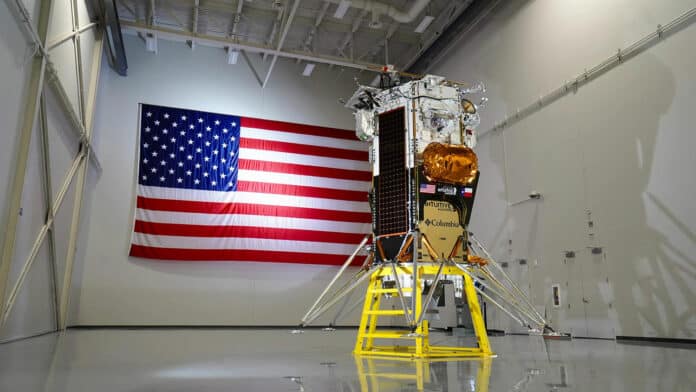Houston-based space startup Intuitive Machines announced that the liftoff of the IM-1 lunar mission is now targeted for a multi-day launch window with SpaceX, which opens on January 12, 2024.
The mission will launch on a SpaceX Falcon 9 rocket from Cape Canaveral Space Force Station on Florida’s Space Coast. The objective is to place a lander, called Nova-C, on the crater rim of Malapert A near the south pole of the Moon.
The IM-1 mission was originally planned to launch in November 2023, but it has been postponed due to some technical and logistical challenges.
“As previously announced, Intuitive Machines completed its lunar lander in September, and the entire company is looking forward to our upcoming launch,” said Steve Altemus, Co-Founder, President, and Chief Executive Officer. “There are inherent challenges of lunar missions; schedule changes and mission adjustments are a natural consequence of pioneering lunar exploration. Receiving a launch window and the required approvals to fly is a remarkable achievement, and the schedule adjustment is a small price to pay for making history.”
The IM-1 mission will be the Company’s first attempted lunar landing as part of NASA’s Commercial Lunar Payload Services (CLPS) initiative, a key part of NASA’s Artemis lunar exploration efforts. CLPS initiative contracts private companies to deliver scientific and technological payloads to the Moon’s south pole, where astronauts are also aiming to land. This area is known for its abundant water resources, which could support mining and other logistical activities.
The truck-sized Nova-C Lander is a hexagonal cylinder, 4.0 meters (13 feet) tall and 1.57 meters (5 feet) wide, on 6 landing legs. The two-ton (nearly 2,000 kg) lander is capable of carrying approximately 100 kg of payload to the surface.
The scientific payload includes the Laser Retro-Reflector Array (LRA), Navigation Doppler Lidar for Precise Velocity and Range Sensing (NDL), Lunar Node 1 Navigation Demonstrator (LN-1), Stereo Cameras for Lunar Plume-Surface Studies (SCALPSS), and Radio wave Observation at the Lunar Surface of the photoElectron Sheath (ROLSES). In total, there are five NASA and four commercial payloads planned.
The payloads carried by the IM-1 mission will support NASA’s goals of exploring the Moon and preparing for human missions. It will pave the way for the Artemis 3 crewed landing, which is scheduled to take place at the Moon’s south pole no earlier than 2025.
The Artemis program, led by NASA, has already achieved a milestone by sending the uncrewed Artemis 1 around the Moon in 2022. The next step is to launch Artemis 2, which will carry four astronauts on a similar lunar orbit in 2024.
